Best Home Security Systems for Renters of 2025
After reviewing monitoring services, ease of installation, moving fees, and more, we found SimpliSafe is perfect for renters.
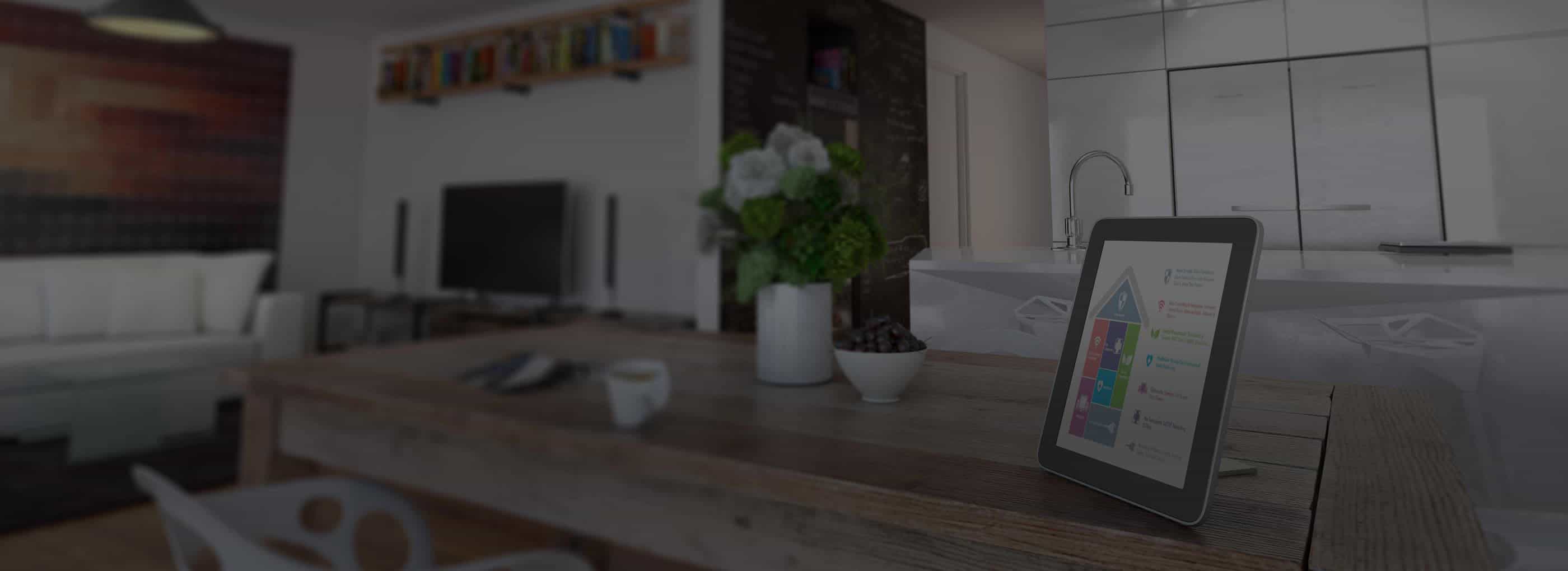
SafeHome.org may receive compensation from some providers listed on this page. Learn More
We may receive compensation from some providers listed on this page. Learn More

As the originator of apartment-based security systems, SimpliSafe now offers the best monitoring with video verification for renters thanks to its new Fast Protect live guard monitoring.

With a six-month trial period, ADT lets you fully test out your system before you commit. The money-back guarantee might even take you to the end of your lease.

Cove offers affordable, build-your-own packages that let you buy what you need and nothing more, in addition to its frequent discounts and affordable monitoring. That’s why Cove is our top budget pick.
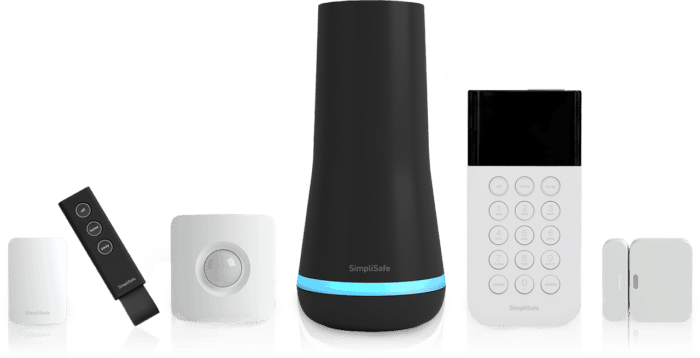
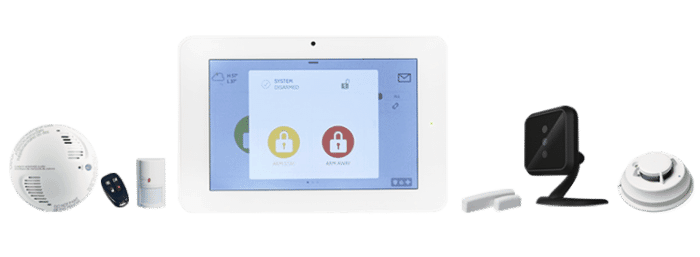
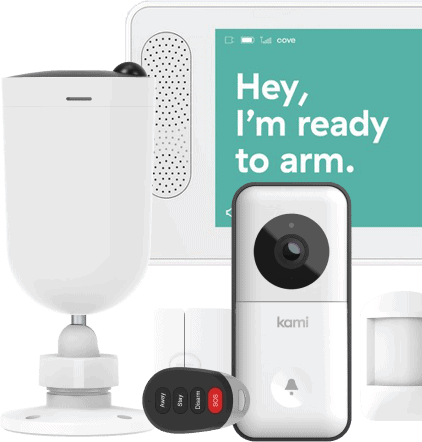
We’re not all ready to settle down into the suburban home with the picket fence and the rose bushes. Some of us never plan to settle down like that. Apartment living offers a ton of conveniences. Installing a security system can sometimes be a bit tricky, though. Most landlords don’t want you drilling into walls and rerouting wires.
The good news is that there are plenty of great home security systems out there that can cater specifically to renters, and we’ve tested most of them. Our top picks are SimpliSafe, ADT, Cove, Frontpoint, and Alder. They offer wireless, DIY installation to keep your security deposit intact and flexibility to scale when you move. Let’s dig in to figure out which one’s right for you.
Our team of home security experts strongly believes that to make honest and accurate recommendations, we need to test security systems first-hand. So we buy the equipment with our own money, set them up in our own homes, and live with them for weeks or months. This approach lets us get a good feel for the usability, app, response time, and features of each security system we recommend for renters.
We do our best to compare apples to apples. For starters, we install all our test systems in the same house owned by one of our security experts. It’s a two-story, 2,200-square-foot home. We find that this setup offers the best glimpse of how each security system functions in the real world.
We also buy the same components from each system and set them up in identical locations. Here is where we installed the devices we tested:
Since we’re talking about security systems for renters, however, we drew upon our extensive security experience to decide which factors would be most important to renters. We concluded that these are the most important criteria to consider:
Using these criteria, here’s how we compared and ranked our top picks.
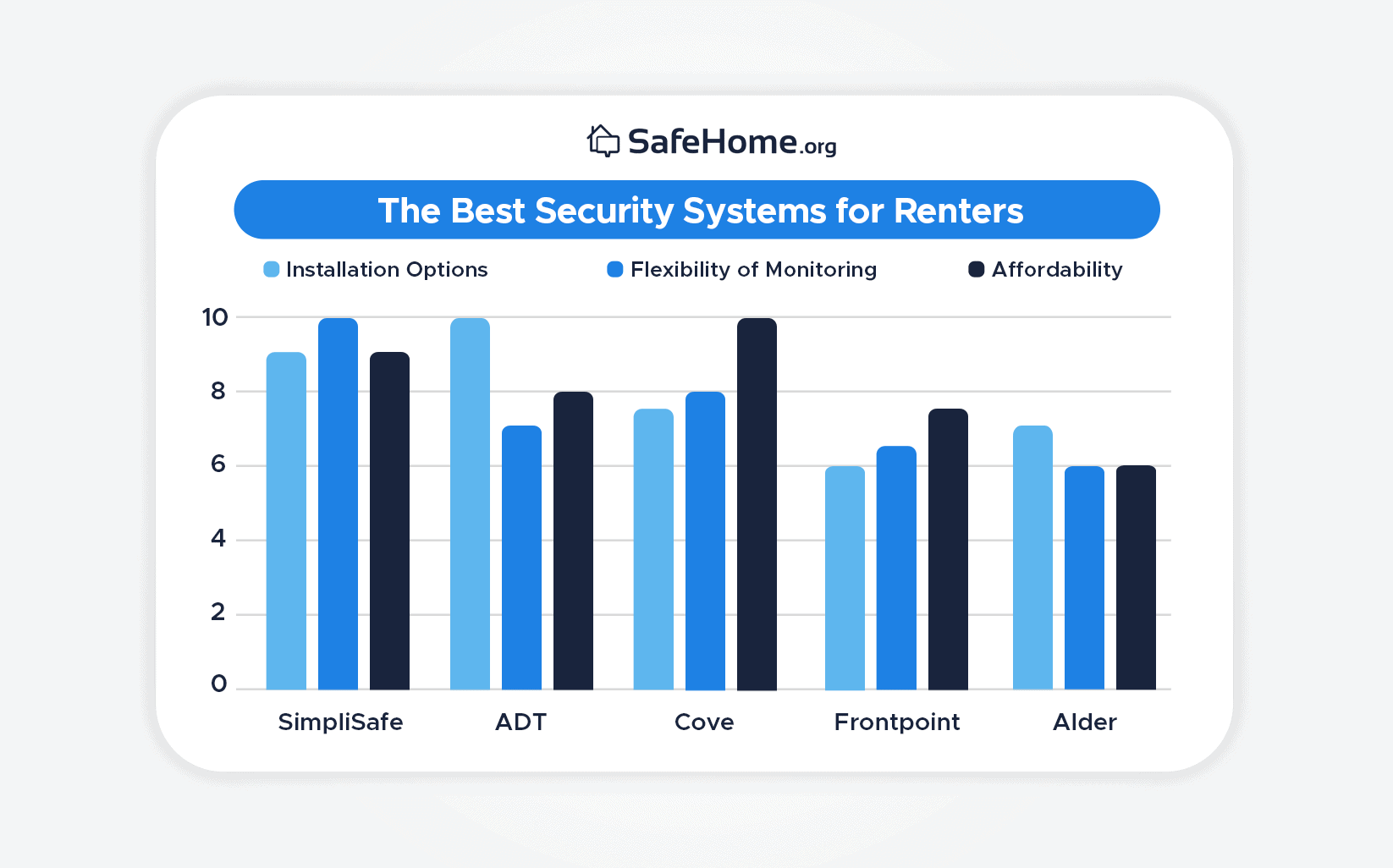
Rating the Best Security System for Renters
We’ve all landed on websites featuring reviews for everything from surfboards to hammocks. But our team of experts exclusively review home security and safety equipment. This allows us to dedicate our attention to the topic at hand. The experts who contributed to this review include:
With over 75 years of combined industry experience, we are the most accomplished home security team on the internet. Our work on SafeHome.org started in 2016 and has been featured in many major outlets, including The New York Times and The Washington Post. Collectively, we have:
All of our recommendations are based on first-hand product experience and a deep understanding of the home security industry. So, let’s take a closer look at the best home security systems for renters.
| System |
SimpliSafe

|
ADT
|
Cove Security

|
Frontpoint

|
Alder
|
|---|---|---|---|---|---|
| Ranking |
1st

|
2nd

|
3rd

|
4th

|
5th

|
| SecureScore™ | 9.2 | 9.3 | 8.8 | 8.7 | 8.8 |
| Contract length | Monthly | 36 months or monthly with Self Setup | Monthly | Monthly or 36 months | 36 months |
| Installation type | DIY or professional | DIY or professional | DIY or professional | DIY | DIY or professional |
| Professional monitoring cost | Starting at $21.99 per month | Starting at $24.99 per month | Starting at $19.99 per month | Starting at $44.99 per month | Starting at $39.99 per month |
| Equipment cost | Packages starting at $250.96 | Packages starting at $269 | Packages starting at $75 (with discounts) | Packages starting at $69 (after discounts) | Free with 3-year contract |
| Video doorbell | 1080p hardwired | 1080p battery-powered | 2K hardwired or battery-powered | 1080p hardwired or battery-powered | None |
| Review | SimpliSafe review | ADT review | Cove review | Frontpoint review | Alder review |

SimpliSafe was one of the first home security systems to offer security solutions targeted to renters. And it’s still one of the best with an easy DIY installation and contract-free monitoring. Plus, they offer advanced monitoring solutions with live security camera monitoring making it scalable no matter where you end up next year.
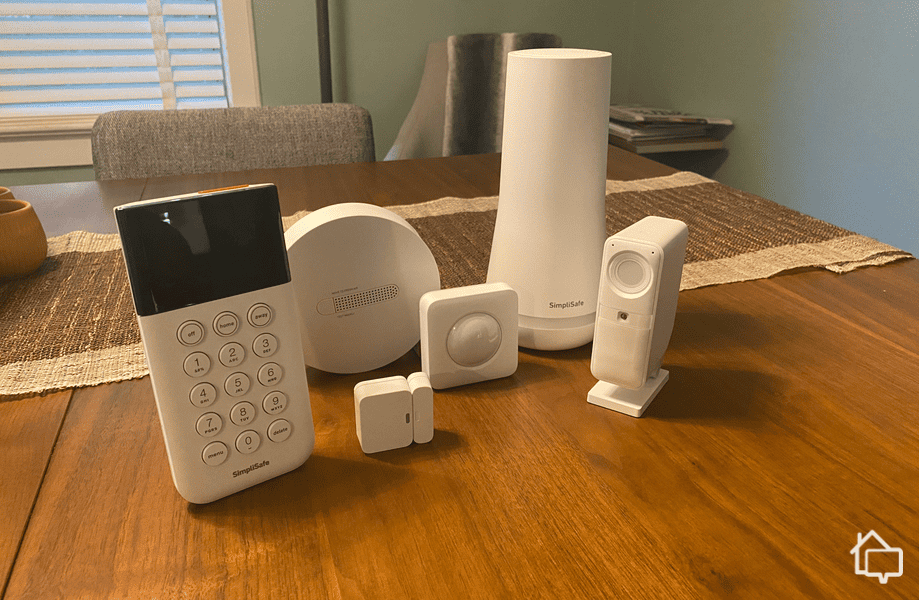
SimpliSafe equipment
As the company that pioneered DIY installation, SimpliSafe’s process is down to a science. Every device comes with a peel-and-stick backing that makes installation quick and avoids any risk of damaging your apartment. It only took us 20 minutes to set up our system. That’s not a record, but it’s pretty close to it.
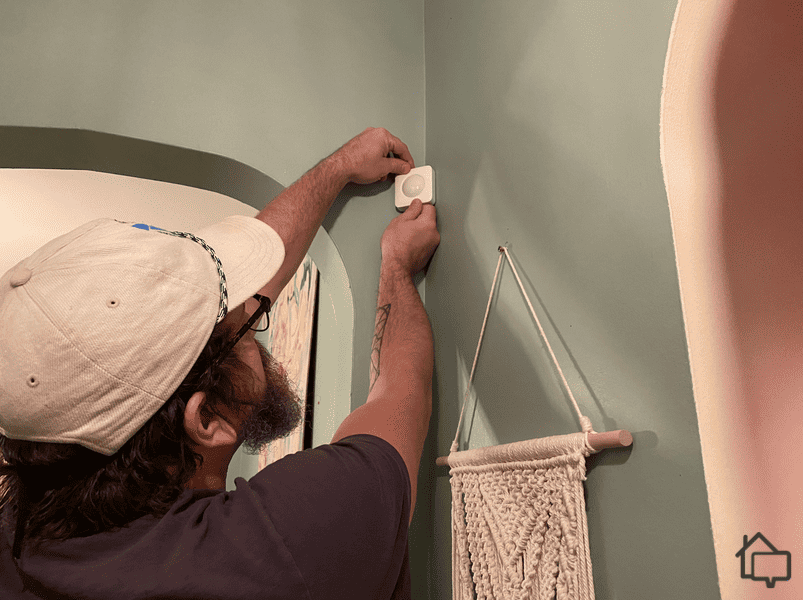
Here’s one of our experts installing the SimpliSafe motion sensors with adhesive backing.
Pro Tip: As a test, we asked a team member who is renting to show his landlord our pictures installing SimpliSafe (like the one above). The landlord was adamant to allow monitored security systems, but later agreed after reading our installation experience.
While SimpliSafe doesn’t have 12 redundant monitoring centers like ADT, they still offer top-tier monitoring features. For instance, SimpliSafe’s agents can use your cameras’ two-way talk, spotlight, and siren to actively deter burglars during alarms. It certainly gave us a jump when we ran a break-in simulation.
That feature, called Live Guard Protection, uses the Smart Alarm wireless indoor camera. After our entry sensor picked up a potential break-in (us entering the house while the system was armed), the camera’s privacy cover snapped open, letting the monitoring center see our living room. As soon as we were in front of the camera, the speaker came alive and a stern, male voice asked us to verify our identity.
Live Guard Protection is included in SimpliSafe’s mid-tier monitoring plan called Core. It’s what we recommend, but there are other subscription plans available. Here’s an overview of SimpliSafe’s monitoring plans and their costs:
| Features | Free | Self-Monitoring with Camera Cloud Storage | Standard Professional Monitoring | Core |
|---|---|---|---|---|
| Cloud storage for 30 days of recordings | No | Yes | No | Yes |
| Smart platform compatibility | No | No | No | Yes |
| Cellular backup | No | No | No | Yes |
| 24/7 professional monitoring | No | No | Yes | Yes |
| Video verification and live guard | No | No | Yes | Yes |
| Equipment warranty | 1-year | 3-year | 3-year | Lifetime |
| Price | Free | $9.99 per month | $21.99 per month | $31.99 per month |
More Options: Two other premium plans are available, named Pro and Pro Plus. They cost $49.99 and $79.99 respectively and add Active Guard monitoring. This enables SimpliSafe’s agents to deter detected threats using the Outdoor Camera and Video Doorbell Pro’s built-in siren, spotlight, and two-way audio.
Kudos to SimpliSafe for making a video doorbell with multiple setup options. When we tested the SimpliSafe Video Doorbell Pro, we were impressed by how easy it was to adjust motion sensor sensitivity. That can be a crucial tool for apartment dwellers, since you tend to have traffic by your front door. False alerts can convince you it’s OK to let some go. When you know every alert is meaningful, you’re more likely to pay attention to all of them.
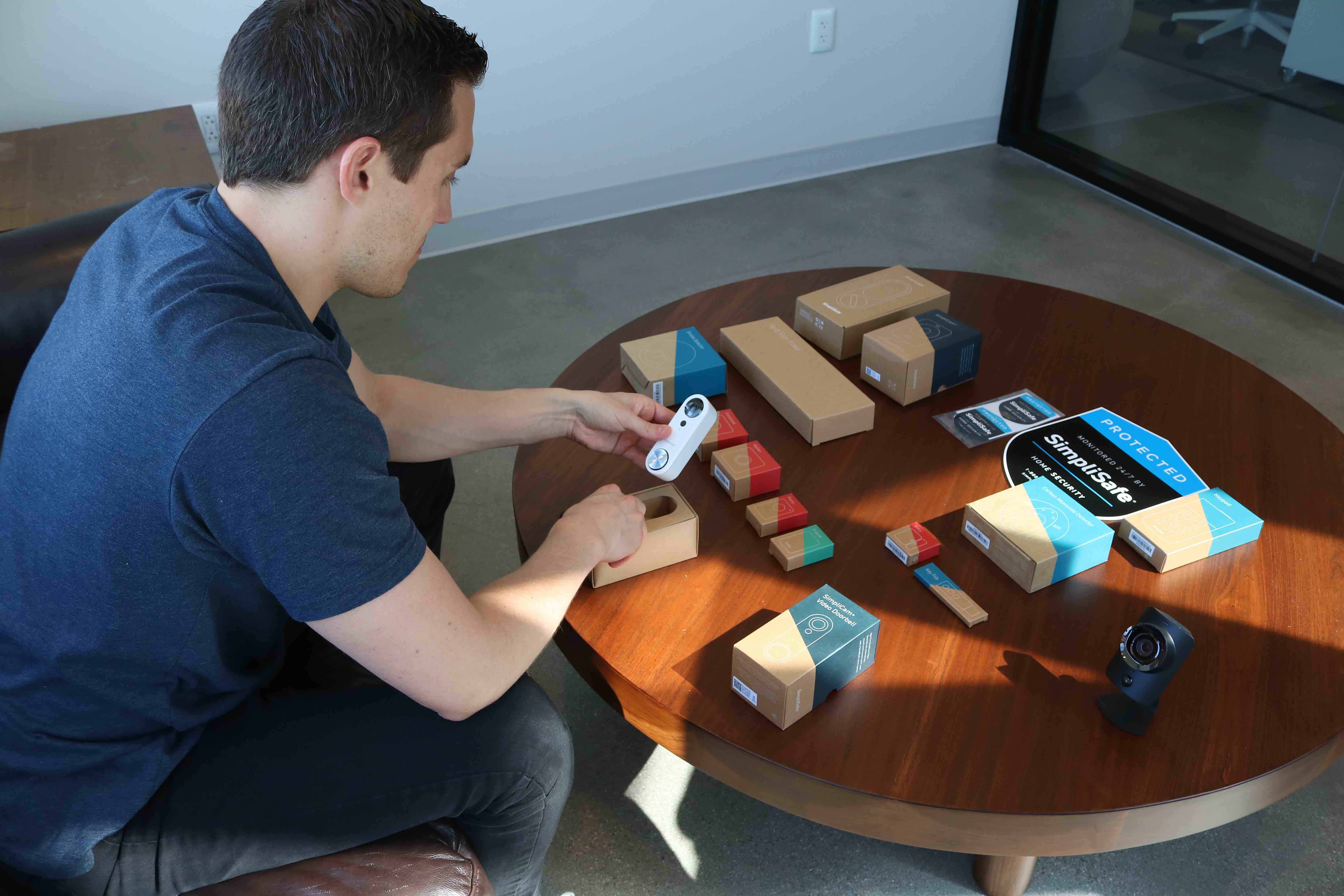
Of all the SimpliSafe devices we tested, the video doorbell was the only one that needed both hardwiring and drilling.
Unfortunately, SimpliSafe only offers its video doorbell in a hardwired version. The installation process isn’t all that hard, but it involves shutting off your power which can be tricky in an apartment. You’ll also need some tools and permission from your landlord. If a doorbell is your priority, you’ll like the Google Nest Doorbell that’s available with an ADT system.
FYI: The SimpliSafe doorbell wasn’t the easiest to set up. It took us over 15 minutes, and that’s with a setup that perfectly matches SimpliSafe’ specs (8 to 24 VAC, 10 to 30 VA).
| Monitoring options | Professional and DIY |
|---|---|
| Installation | Professional and DIY |
| Smart platform integration | Alexa and Google Home |
| Equipment cost | Packages starting at $250.96 |
| Monthly monitoring cost | From $22.99 |
| Contract length | Monthly |

Apartments used to be one of the few cases where we didn’t recommend ADT. That was when they only offered professionally installed systems. Now, they offer DIY installation and monitoring. The installation process was so easy we never even had to pull out our toolbox. By installing the system ourselves, we avoided ADT’s long-term contract, too.
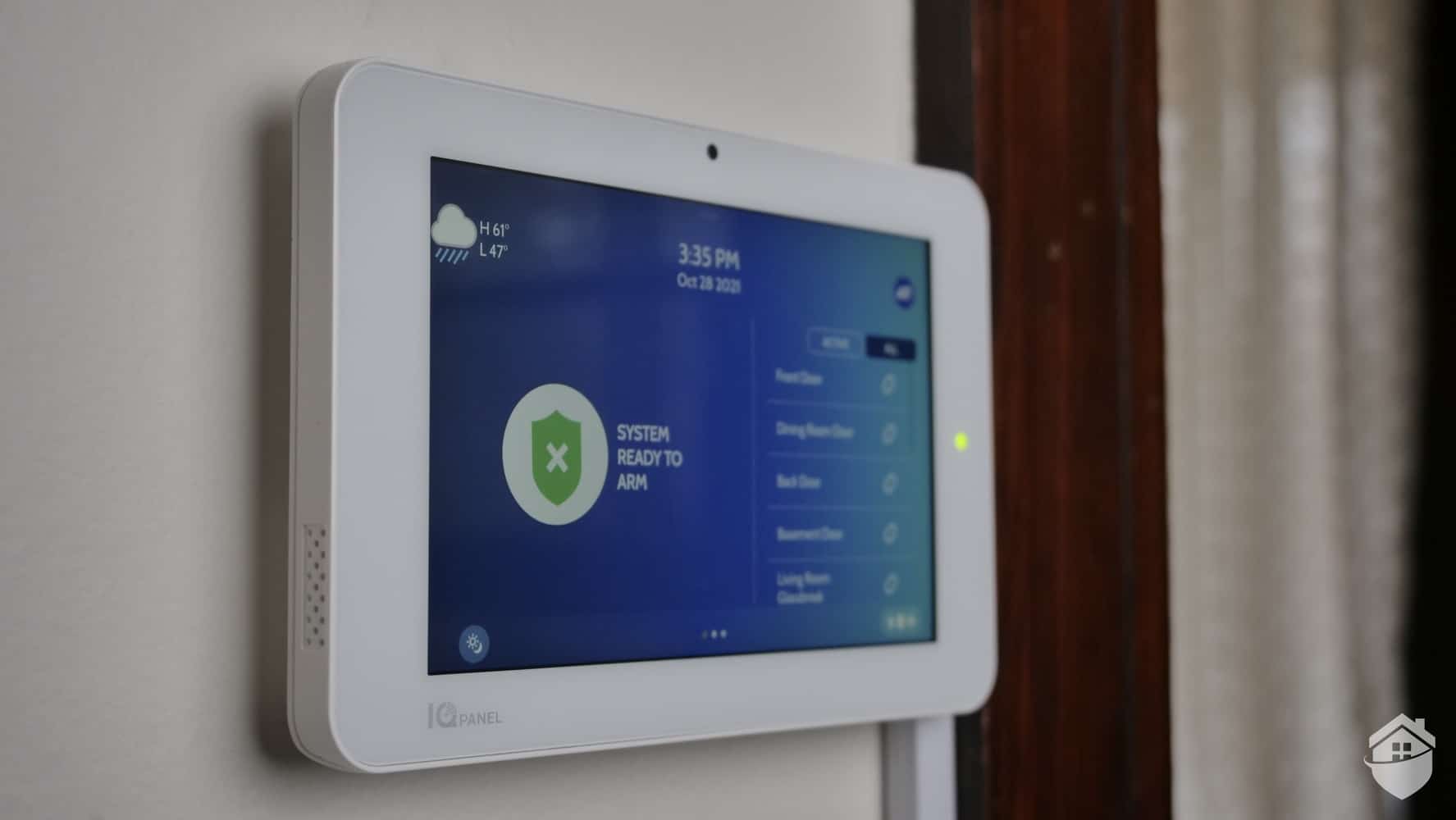
ADT Control Panel
ADT is one of the only companies out there that offers full, professional installation, and there’s something to be said for letting techs set up your equipment. ADT has been offering this service for 150 years, and it’s pretty good at it. You can be sure everything gets installed in the best possible spots, and techs even go over with you how to use the system. Plus, you know, you can put your feet up and watch the game.
You can now install ADT systems yourself, though, and that’s often the best option for apartment dwellers. ADT has streamlined the process with peel-and-stick options. Of course, the other bonus to DIYing your installation is that you don’t have to pay a dime to get your equipment set up. As nice as it is to let someone else do all the work, professional installation can cost upwards of $150.
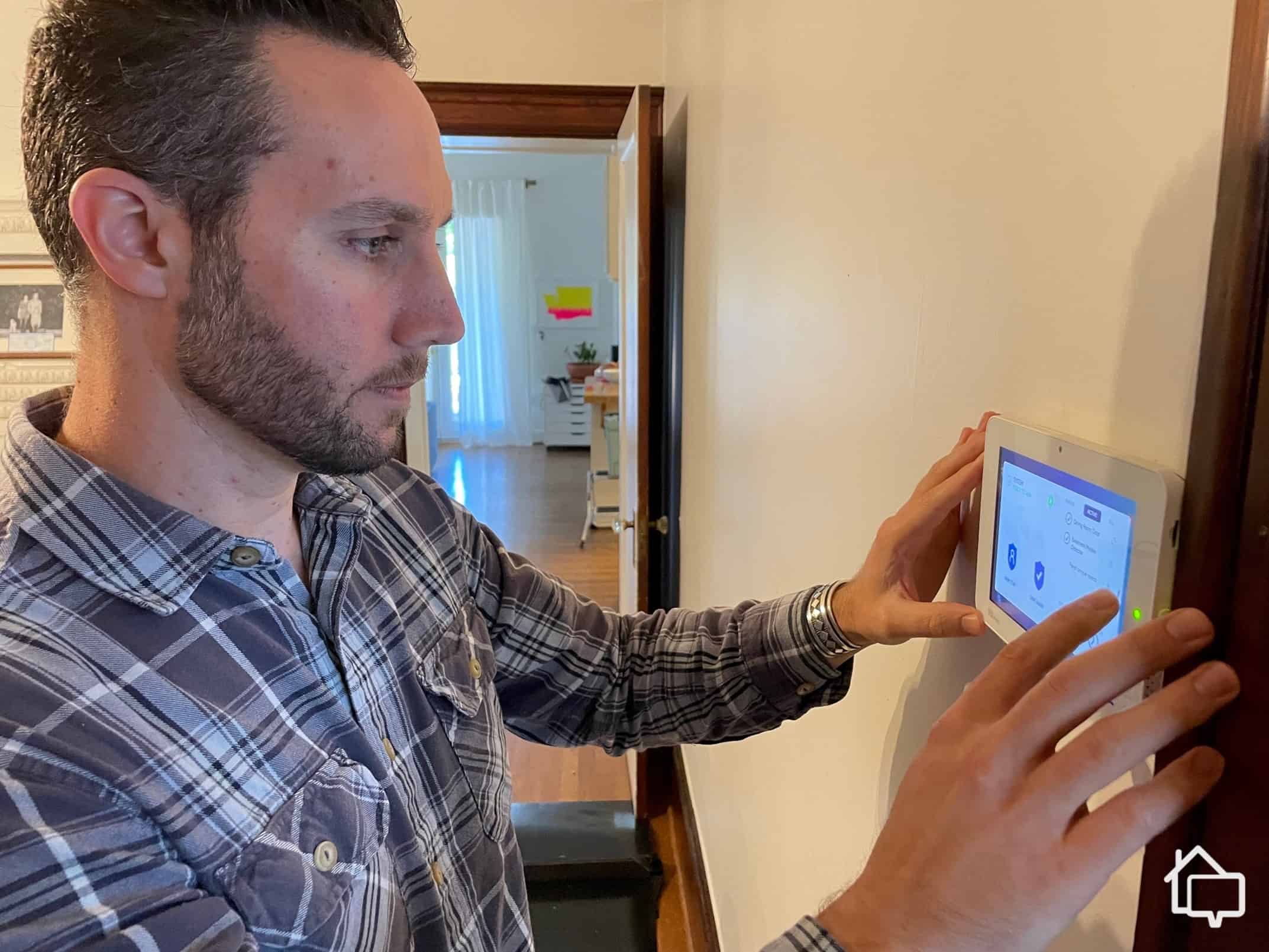
Here’s how our ADT control panel looked right after installation.
ADT now offers Google Nest cameras, packed with some of the most advanced tech in the industry. Even these, though, were completely DIY install. In fact, the particular Google Nest Doorbell we tested was battery-powered so it was even easier to install than the SimpliSafe wired video doorbell. Plus, while professional installation is nice and all, it does cost money. DIY is 100-percent free.
Note: We still had to use a drill to install the Nest Doorbell, specifically for the wall anchor. And frankly, we don’t recommend installing it any other way. It’s a $180 piece of equipment; you’d want to make sure it’s anchored securely.
With 12 redundant monitoring centers across North America, ADT offers the most reliable professional monitoring service in the industry. Of course, it’s not the cheapest, but for the quality, the value is there. Plus, you can always switch to free self-monitoring if you need to save a few bucks because your landlord raised your rent. Here’s a breakdown of ADT’s monitoring plans:
| Features | Secure | Smart | Complete |
|---|---|---|---|
| 24/7 professional monitoring | Yes | Yes | Yes |
| Support for security cameras | No | No | Yes |
| Home automation features | No | Yes | Yes |
| Price | $24.99 per month | $29.99 per month | $39.99 per month |
FYI: ADT charges slightly higher monthly fees for professionally installed security systems, and there’s also a three-year contract required. Self-installed ADT systems, however, don’t require a contract.
Like we mentioned, ADT now offers the Google Nest Doorbell. It’s wireless and battery-powered, making it ideal for apartments. Of course, this doorbell is compatible with Google Home, but it works with Alexa, too. It features everything we look for in a video doorbell, including a wide field of view and two-way talk, plus a few extras.
Like most doorbell cameras, the Nest Doorbell can tell the difference between people, packages, cars, and animals. But Nest takes this a step further with facial recognition software. That way, we got alerts saying “Alex is at the front door” instead of “Someone is at the front door.” This is useful for tracking any apartment maintenance and ensuring your landlord is meeting their obligations according to the lease.
Not only do you get customized alerts, but you can set your security system to let people you trust in automatically. No more leaving the key under the mat for the dogwalker.
>> Compare: ADT vs Ring Comparison – Which Security System is Best?
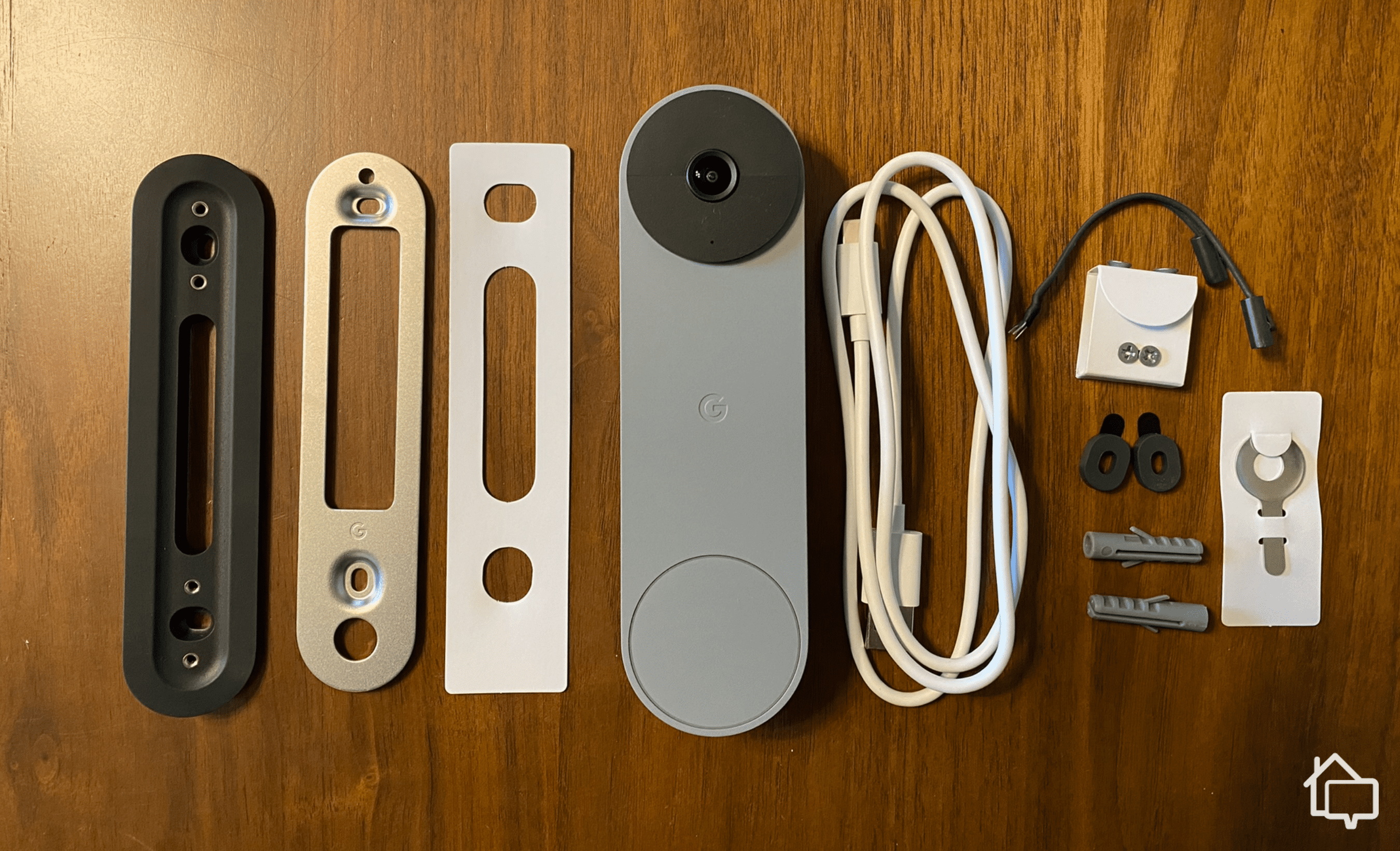
That’s everything we received from the Nest Doorbell (battery) box.
| Equipment Cost | Packages starting at $349 |
|---|---|
| Monitoring Options | Professional or DIY |
| Monitoring Cost | Starting at $24.99 per month |
| Contract Length | Monthly |
| Installation Options | Professional or DIY |
| Smart Platform Integration | Alexa and Google Home |


Cove offers a few features perfect for renters. Their easy installation process does not use any screws that could damage your walls. All of their systems are bought a la carte, so you don’t need to buy a system made for a house and try to fit it in your apartment. And while Cove requires professional monitoring, there are no contracts, so you can pack up and move at any time.
You can have your Cove system professionally installed if you like, but there’s really no need for it. It’s incredibly easy to install. Cove packed our equipment into the box in the exact order we needed to get it out. Hub first. Once we had that plugged in, we had the master code that connected all the other sensors and cameras.
Everything was peel and stick, which not only made the process faster but ensured we didn’t have to put any drill holes into our rented walls. Meanwhile, almost everything plugged into an outlet, so we didn’t have to worry about wiring either. 30 minutes to get the whole Cove security system installed, and we saved $125 by doing it all ourselves.
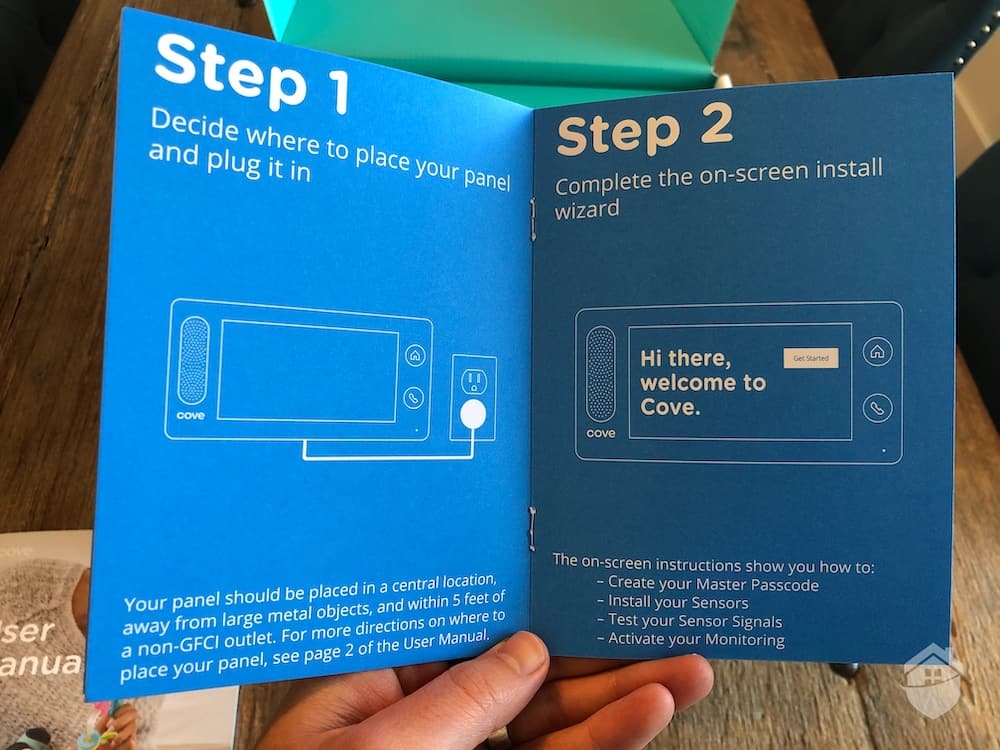
We appreciate the pictures and simple instructions in Cove’s installation guide.
It was as easy as plugging in the hub, setting up a master code, mounting some sensors, and installing the cameras. There was no need to drill holes in the wall or mess around with the internal wiring. Most devices are battery-powered or plug into a socket, and the sensors stick to the wall with adhesives.
Pro Tip: What we really loved about installing Cove? The on-screen and audible instructions. And with the touchscreen keypad’s 24-hour battery, you can take it around with you as you install your sensors around the apartment.
Cove is now one of the few home security companies that still requires professional monitoring. It means Cove won’t work as a no-monthly-fee option. However, there are no long-term contracts like you’ll find with Vivint or Alder. Cancelling is as easy as calling customer support.
Besides, professional monitoring is always the safer route. Both of their affordable plans come with 24/7 protection and feature a 100 percent cellular connection. The last time a major storm came through our area, we lost power and, of course, Wi-Fi. Our Cove system kept on working, though, for the full 18 hours.
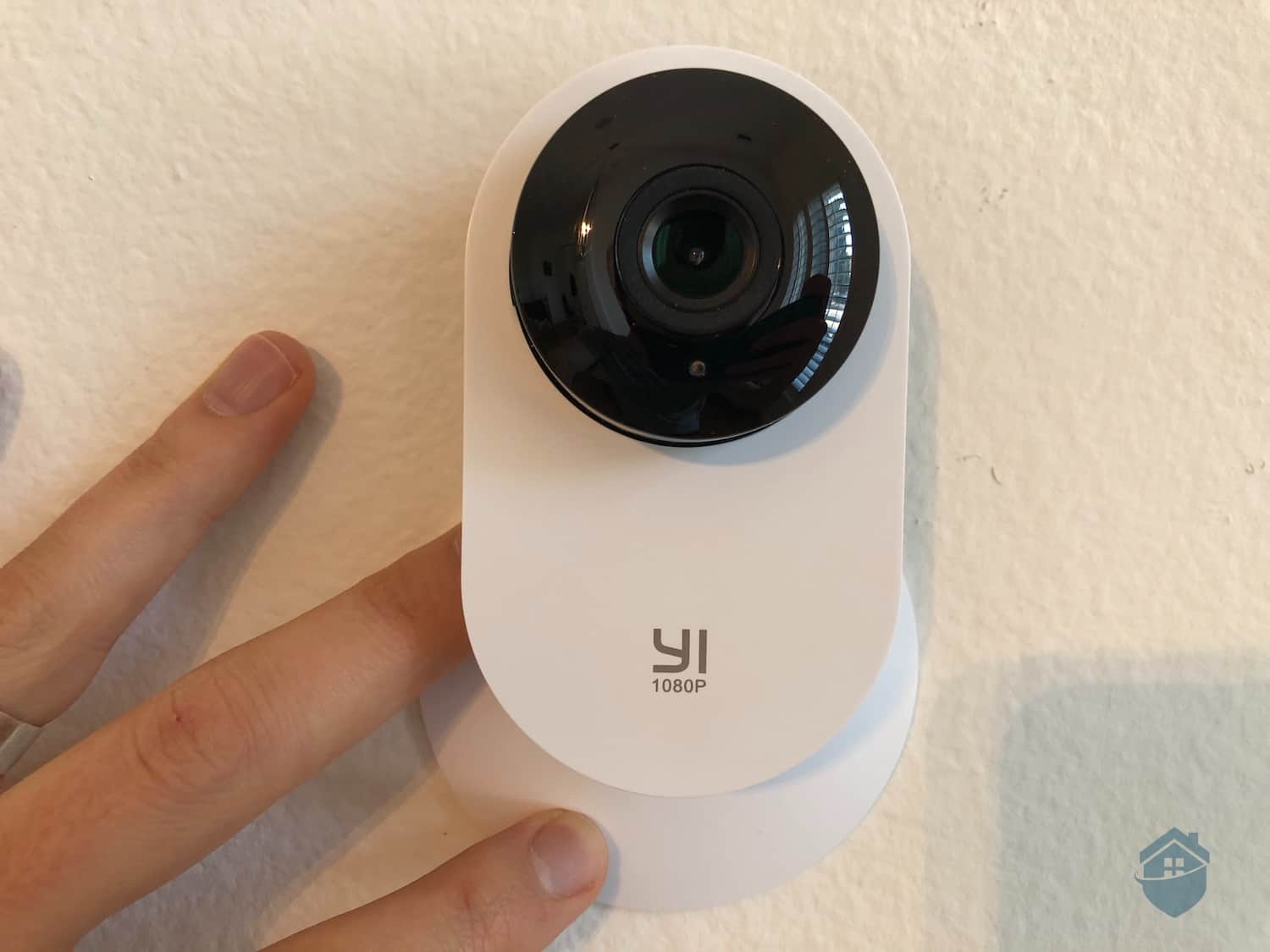
YI Indoor Camera for Cove
Cove doesn’t manufacture its own cameras, which means you wind up paying a couple of dollars more than you might with, say, Ring. The good news is that Cove offers Eufy doorbells, and Eufy is among the best camera companies in the business. Cove’s doorbell features 2K resolution, higher than the industry standard, and two-way talk, so you can chat with your mailman when they drop off packages.
We were particularly impressed with this doorbell’s ability to detect visitors through sound as well as movement. Plus, with a built-in Micro SD card, we didn’t have to pay a monthly cloud storage fee. Cove does offer cloud storage plans, but they’re $2.99 per month per camera, and that’s on top of monitoring costs. Free is always our preferred option.
FYI: Before Eufy, Cove used to offer security cameras from Yi (see picture above). We like the switch because back then, the Yi cameras needed a different app than the Cove app. With the current setup, we were able to view camera footage and recordings straight from the Cove Connect app.
| Monitoring options | Professional or DIY |
|---|---|
| Installation | Professional or DIY |
| Smart platform integration | Alexa and Google Home |
| Equipment cost | From $300 for hub and keypad |
| Monthly monitoring cost | From $19.99 |
| Contract length | Monthly |

Frontpoint mixes many of the best qualities of the other systems on this list. Like SimpliSafe, the company runs frequent sales with big discounts on equipment and an easy DIY installation process. On the other hand, they offer advanced home automation features normally found in white glove systems like ADT.
Frontpoint is one of the best DIY systems. Instructions are clear, and everything is peel and stick. We installed our system in about thirty minutes. When we had questions, such as where’s the best spot to put our motion sensor, we called up their support and got direct answers. In this case, between five and seven feet off the floor.
FYI: Just can’t find time to install your Frontpoint system? The company does offer professional installation through a third-party service – Hello Tech. Prices start at $99.
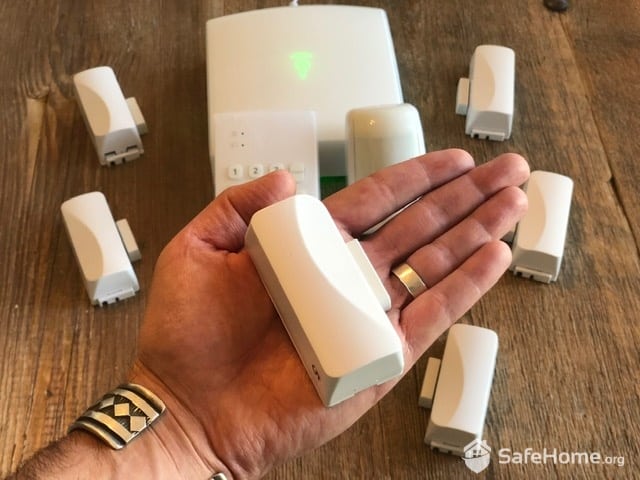
We loved the equipment quality, but the sensors were bulkier than we expected.
So Frontpoint recently overhauled its monitoring plans to provide customers with more choice, and we’re definitely intrigued. You can still sign up for Frontpoint’s full professional monitoring service, which not only protects you from intrusions but also from environmental dangers like flooding, fires, and carbon monoxide. You get some of the fastest home security response times in the industry for around $50 a month.
You can also now self-monitor. Sort of. Frontpoint doesn’t have a true no-monthly-fee plan, but you can choose to monitor your own system for just $15 a month. For that price, you not only get real-time alerts and access to video footage, smart home controls, and some clever video analytics that let you set up alerts for just the events you care about. We set ours to ignore our dog, for instance, unless he jumped up on the couch.
Renters don’t always need a lot of cameras. We live in a third-floor walkup, for instance, so we don’t need an outdoor camera. We do like having eyes on our landing, though, and Frontpoint’s wireless doorbell does that job perfectly. We didn’t have to fiddle with our apartment’s wiring, and we had the device up in just about ten minutes.
We should point out that Frontpoint does offer a wired version of its doorbell, and it eliminates the need to change the battery out every six months. Its only other advantage, though, is that it works in temperatures down to 58 degrees below zero.
| Features | Wired Video Doorbell | Wireless Video Doorbell |
|---|---|---|
| Smart notifications | Yes | Yes |
| Two-way audio | Yes | Yes |
| Resolution | 1080p | 1080p |
| Infrared night vision | Yes | Yes |
| Requires removal of current doorbell | Yes | No |
| Battery life | N/A | About 6 months |
| Operating temperatures | 122 to -58 degrees Fahrenheit | 122 to -4 degrees Fahrenheit |
| Price | $219.99 | $319.99 |
FYI: Frontpoint constantly runs sales, bringing down the price of the Wired Video Doorbell down to $110 and the price of the Wireless Video Doorbell down to $160.
| Equipment Cost | Packages starting at $386.93 |
|---|---|
| Monitoring Options | Professional or DIY |
| Monitoring Cost | Starting at $14.99 per month |
| Contract Lengths | Monthly or 36 months |
| Installation Options | DIY |
| Smart Platform Integrations | Google Home, Alexa, and Siri |

Alder Home Security offers all the tools you need to keep your family safe, with an easy installation perfect for renters. They offer a comprehensive lineup of equipment with touchscreen hubs and several cameras along with professional monitoring. However, every Alder system requires a 36-month contract.
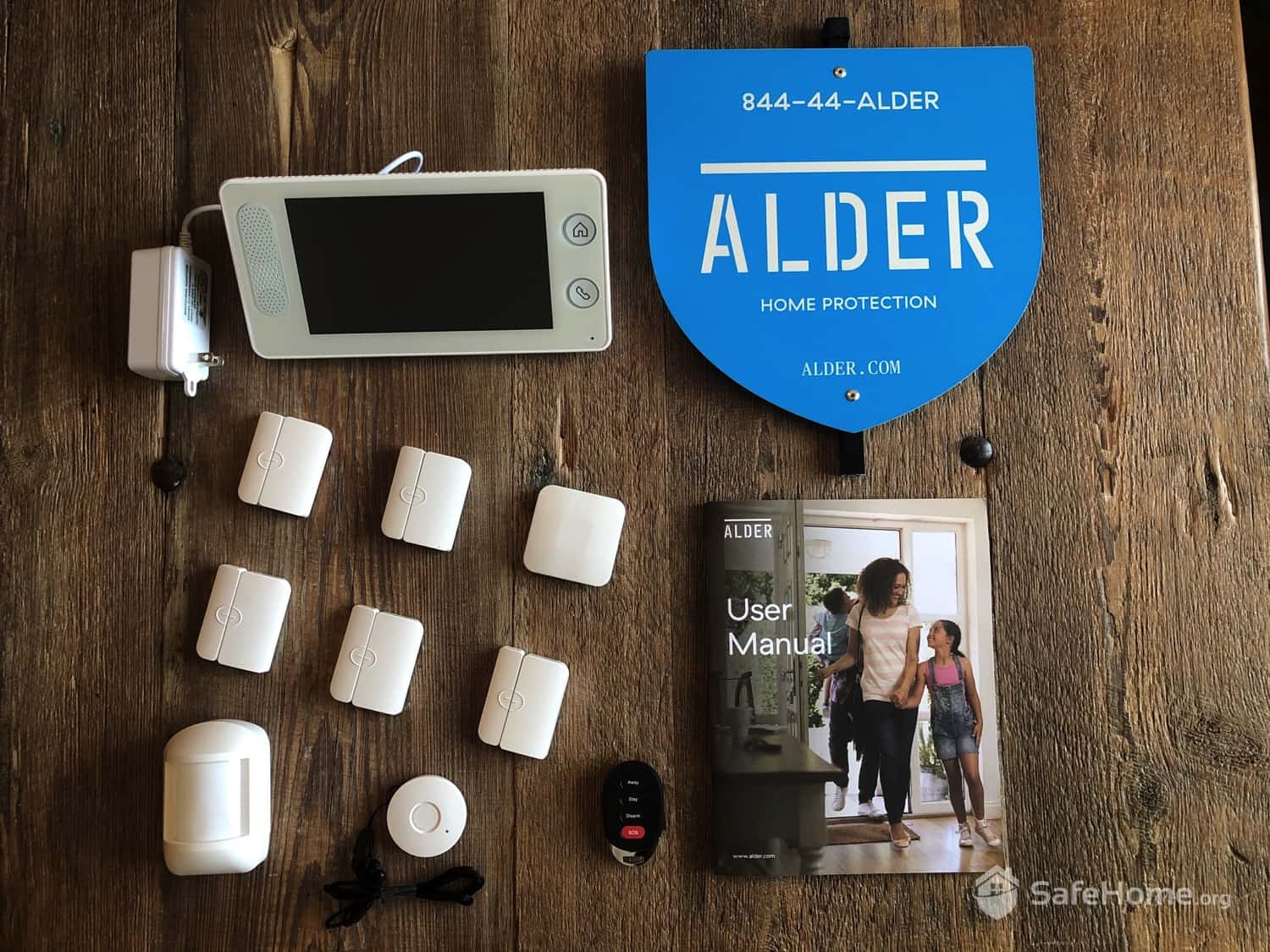
Alder security equipment
Alder’s installation is one of the most streamlined in the industry. All the equipment is wireless and uses a peel and stick backing for installation so we didn’t need a single tool to get our system up. But, what impressed us most was that the equipment came pre-programmed so our was ready-to-go as soon as we installed it.
A lot of renters prefer self-monitoring since it saves a little extra money, and it avoids long-term contracts. Unfortunately, that’s not an option with Alder. They require a three-year commitment to professional monitoring. We recommend professional monitoring for everyone, though, even renters.
Alder offers three monitoring plans. The Basic Plan covers sensors for $40 a month. The Standard Plan costs an additional $5 a month but adds home automation. At $55, the Premium Plan includes all that, plus camera coverage.
Alder just recently changed its video doorbell option. The company used to offer Skybell devices. Now they manufacture their own doorbell. It features 2K resolution (about twice as clear as the industry standard 1080p), two-way audio, and full-color night vision. There’s also built-in person detection technology which minimizes false alerts.
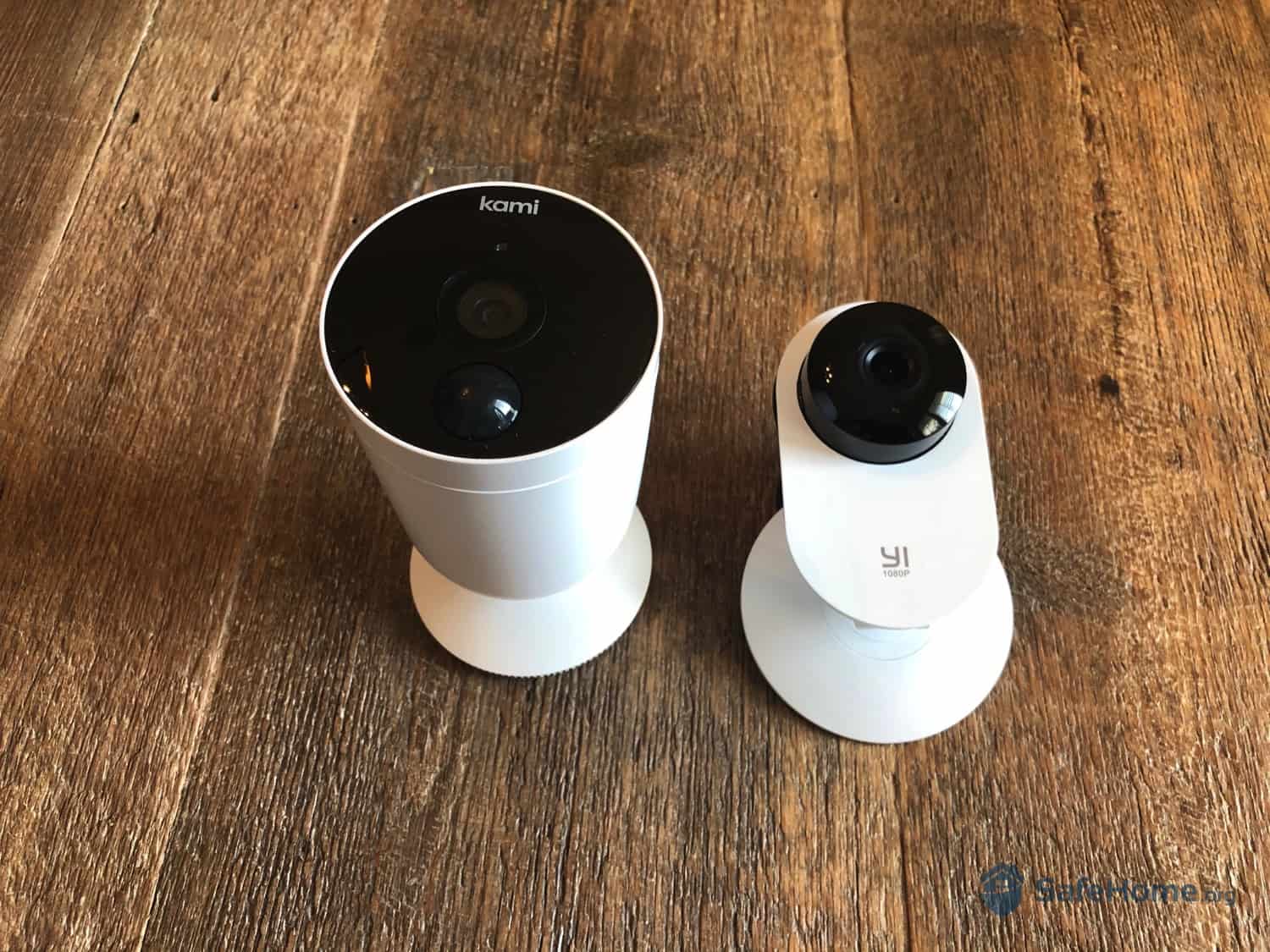
Alder Security Cameras
Pro Tip: While you can’t get a video doorbell, Alder’s outdoor security cameras are surprisingly good with 2K resolution that lets you easily identify faces or see license plates, just like you could with a video doorbell. They even give Vivint a run for their money. See how their cameras stack up in our Alder vs Vivint comparison.
| Equipment cost | Packages starting at $360 |
|---|---|
| Monitoring options | Professional |
| Monitoring cost | Starting at $40 per month |
| Contract length | 36 months |
| Installation options | Professional or DIY |
| Smart platform integration | Alexa and Google Home |
SimpliSafe, ADT, Cove, Frontpoint, and Alder are our top-pick security systems for renters. But how exactly did we come to that conclusion? Well, as we said above, we looked at certain factors. These were those factors:
From Anthony Travaglia, Retired Police Officer, Home Security Expert
In our experience, most apartment complexes prefer professional installation over DIY installation. When you bring in the professionals, your landlord gets a level of assurance that the system will get installed without any collateral damage. With a DIY install, landlords and property managers worry about holes in the wall that are difficult to patch. As a tenant, messing with the wiring in a doorbell is a whole other level of concern for landlords.
>> Read About: Best Professionally Monitored and Installed Home Security Systems of 2025
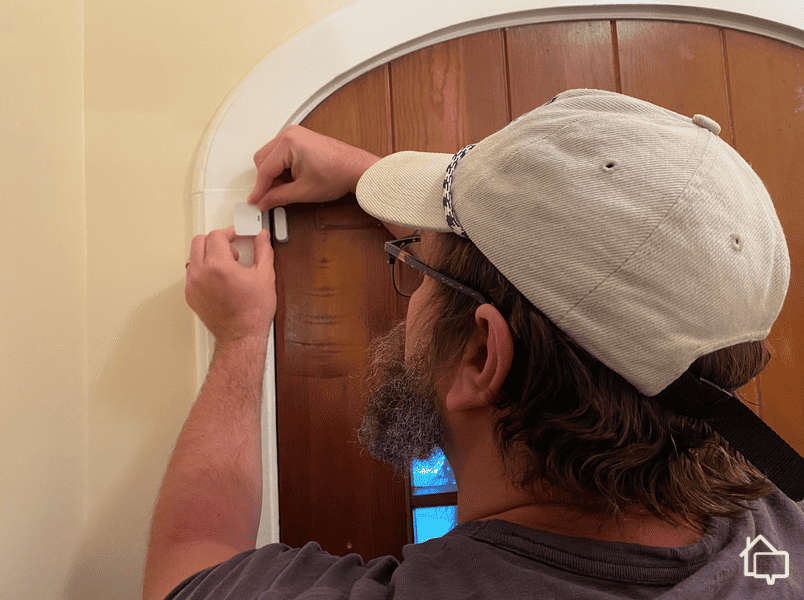
SimpliSafe, our top-pick for renters, offers both professional and DIY installation; we opted for the latter.
That said, there’s nothing wrong with an easy DIY security system, like ADT Self Setup. You don’t need to change any wiring or even pick up a tool from your toolbox. Everything is peel-and-stick adhesives, just like putting up a command strip. That’s why it made our list of the best DIY home security systems.
Let’s face it, when you rent a home or apartment, you may not have as much in your home to steal and don’t really care that much about vandalism. That’s a problem for your property manager to deal with. So, should you even bother with professional monitoring for your rental’s security system? Well, here are a few reasons you might want to consider professional monitoring:
Okay, that last one is a bit of a joke, but it’s true for me. There are plenty of reasons a renter could benefit from professional monitoring.
There are also other factors to consider, like which state you live in and what type of property you’re renting. For example:
Ultimately, it’s your call whether to get professional monitoring or not. But for most people, it is the safest route.
Generally speaking, tenants can install a security system at the place they rent. However, you won’t be able to put outdoor security cameras up anywhere outside of the space you rent. We always recommend checking with your landlord to see what areas you can install equipment.
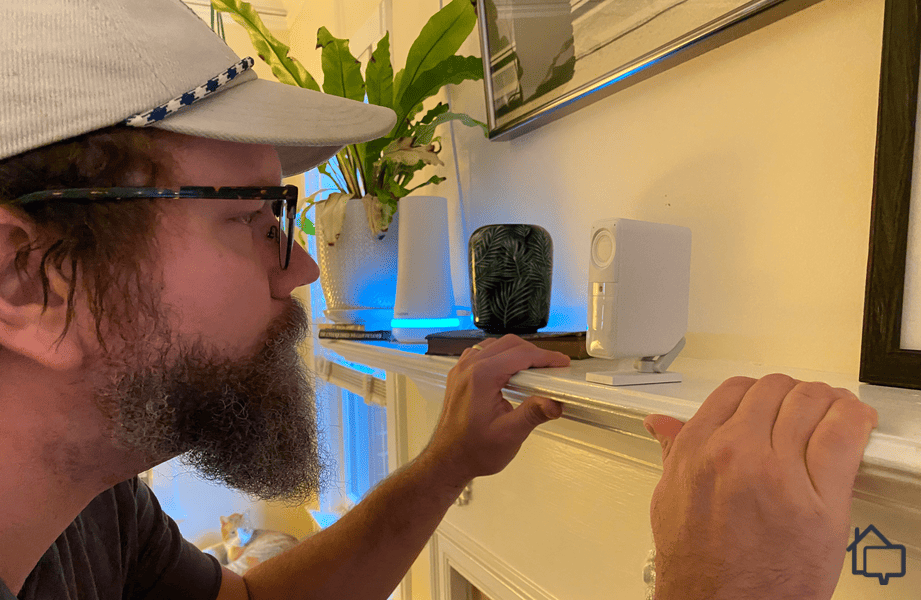
We tested a SimpliSafe indoor camera with a privacy shutter to protect your privacy.
Also, check through your lease before buying anything. Make sure there are no clauses against video recording equipment. While recording in your own apartment should never be an issue, if one of your indoor cameras can see through a window into someone else's apartment, it could become one. Basically, just use common sense and always ask your landlord first to avoid any potential fees taken off your security deposit when you leave.
>> Learn About: Can Tenants Install Security Cameras?
Every living situation is different. That goes double for renters. Some of you have landlords who welcome home modifications. They might even be glad you’re installing a security system. After all, their property ultimately benefits. But, we also know landlords who are sticklers when it comes to any modification to their unit and will not allow any semi-permanent security equipment.
Either way, we all deserve home security. That’s why we found the best systems that can even satisfy the sticklers. So, it’s not a question of whether or not you can get a security system, but rather which option is the best for your needs. Our favorite is SimpliSafe, but ADT, Cove, Frontpoint, and Alder also make great systems for renters.
Want to know even more about the best home security systems for apartments? Check out our FAQs below.
All in all, we like SimpliSafe the most. But, we’d recommend ADT or Frontpoint if you can’t replace your current doorbell with SimpliSafe’s video doorbell. And if you want to pay for your equipment through a monthly fee, go with Alder.
As long as you don’t cause any damage while installing your home security system, it shouldn’t cause an issue with your deposit. Just remember to make any necessary fixes before leaving after taking down your equipment.
It’s always a bit riskier signing up for a long-term home security contract as a tenant instead of a homeowner. That’s one of the reasons SimpliSafe is our favorite for renters. But, signing a long-term contract isn’t always bad and you can usually move your system with you for a fee of $100 to $200 for most systems.
Even though we really like Vivint as a home security system, we don’t recommend it for renters. Between its contracts that start at 42 months and the hefty relocation fee, Vivint is made more for people who have hunkered down and plan to live the next 10 to 20 years in the same home.
When you don’t own the place, unfortunately, landlords can generally put rules in place that would prevent you from installing a security system. In practice, most would rather their tenants have a security system. So, it shouldn’t be an issue, but you should still check your lease before buying a system.
CloudaStructure. (2023). Multifamily Crime Poll: Significant Increases in Crime in 2023.
https://www.cloudastructure.com/post/multifamily-crime-poll-significant-increases-in-crime-in-2023